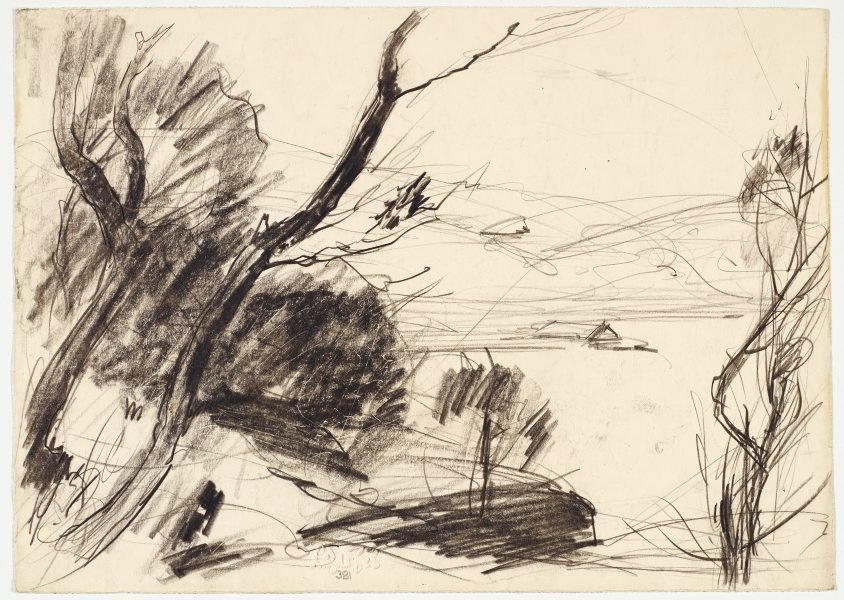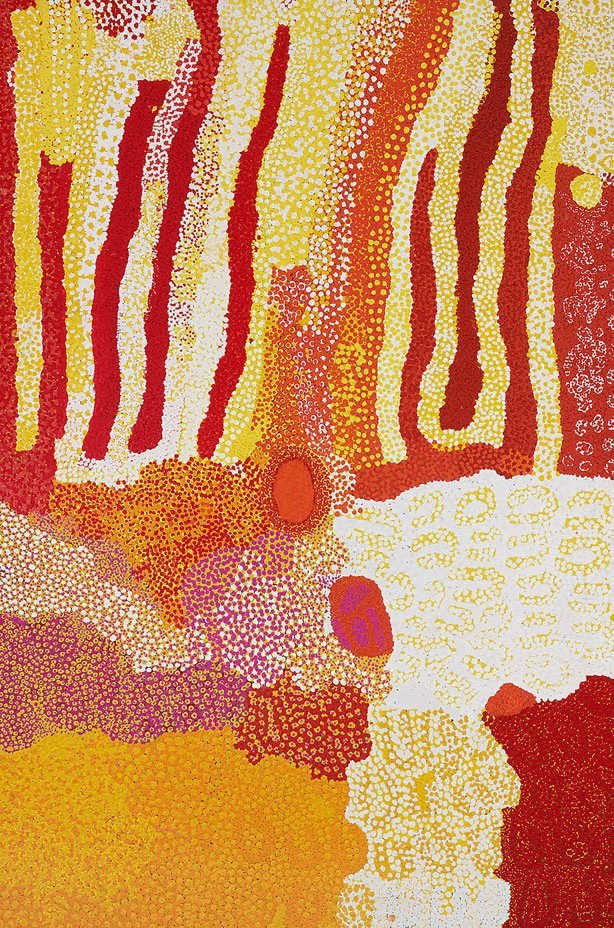The art that made me: Jennifer Keeler-Milne
by the Art Gallery of NSW
Jennifer Keeler-Milne. Photo: Nick Moir/Fairfax Nine
In The art that made me, artists discuss works in the Art Gallery of NSW collection that either inspire, influence or simply delight them. This selection by Jennifer Keeler-Milne first appeared in Look – the Gallery’s members’ magazine.
‘Looking at art and being in the Gallery is far more to me than simply looking at pictures and sculpture,’ says artist Jennifer Keeler-Milne. ‘The Art Gallery of NSW is the place where I feel most connected in our city to culture, history, stories and people. I felt that when I came from Melbourne years ago after completing my art studies and I continue to experience that every time I walk through the doors.’
AGNSW COLLECTION Lloyd Rees recto: Trees and river verso: Two studies of the river
Lloyd Rees recto: Trees and river verso: Two studies of the river
Drawing is an instantaneous form of expression, where the hand of the artist is revealed in an unmediated way. I love the language of drawing, as I draw and also teach drawing. Viewing works on paper and sketchbooks in the study room at the Gallery has been a special pleasure I have regularly enjoyed, alongside my students. Lloyd Rees was prodigious in drawing and in particular, the Australian landscape. Simply looking at how he drew trees over his lifetime is a fascinating and inspiring study in itself. The Gallery has hundreds of his drawings in the collection documenting the different eras and styles in which Rees worked. Seeing these pieces has taken me on a journey of learning and appreciation. The date and exact location of Trees and river is unknown, but the life in these marks shows incredible energy and engagement with his beloved subject.
AGNSW COLLECTION Olive Cotton Skeleton leaf 1964
Olive Cotton Skeleton leaf
I discovered Olive Cotton’s photographic work through seeing it incidentally on the walls of the Gallery, then in her first retrospective exhibition, also at the Art Gallery of NSW. Her images speak to me about what can be expressed using the restricted palette of black and white and all the grey tones in-between. Skeleton leafdisplays many of the attributes I admire in her work. The balance between soft and sharp focus, a considered composition that appears almost effortless, an atmospheric play of light, sensitivity and strength. Last year during lockdown I began collecting skeleton leaves from local footpaths and they became my subject for a series of oil paintings.
AGNSW COLLECTION Lucy Yukenbarri Napanangka Marpa 2001
Lucy Yukenbarri Napanangka Marpa
Joyful and enlivening are the words that come to mind when I encounter this Western desert painting by Lucy Yukenbarri Napanangka. It certainly has the wow factor. It fills me with a sense of awe and pride because it’s uniquely Australian. The colours are eye-popping with warm hues that sit alongside whites to vibrate. The layering of paint, variety of closely patterned marks and meandering organic shapes all suggest the pulsating life of the Great Sandy Desert near Balgo Hills. Under this surface is another layer: an earthed sense of place, history and stories of Aboriginal women’s country. This is both seen and unseen through the painted language of abstraction. Contemporary Indigenous painting has been a game changer – visually engaging and altering our ways of viewing the Australian landscape.
AGNSW COLLECTION Amida Buddha 11th century-12th century
Unknown artist Amida Buddha
The Asian gallery is one of my favourite exhibition spaces. I visit this collection each time I’m in the Gallery. Entering this space is like a trip through Asia, stimulating and always interesting. Works from this collection have had an influence on my art practice. Japanese work in particular holds a fascination for me, including woodblock prints from the Ukiyo-e era, ceramic vessels, nitsuke and Buddhist sculpture. I have made drawings of some of these pieces. The Japanese Amida Buddha has a beautiful and profound stillness. It alludes to the rich interior world of meditation, while being a solid presence in this one.
originally published in the Art Gallery of NSW ‘Look’ magazine and online at https://www.artgallery.nsw.gov.au/artsets/wyr915




